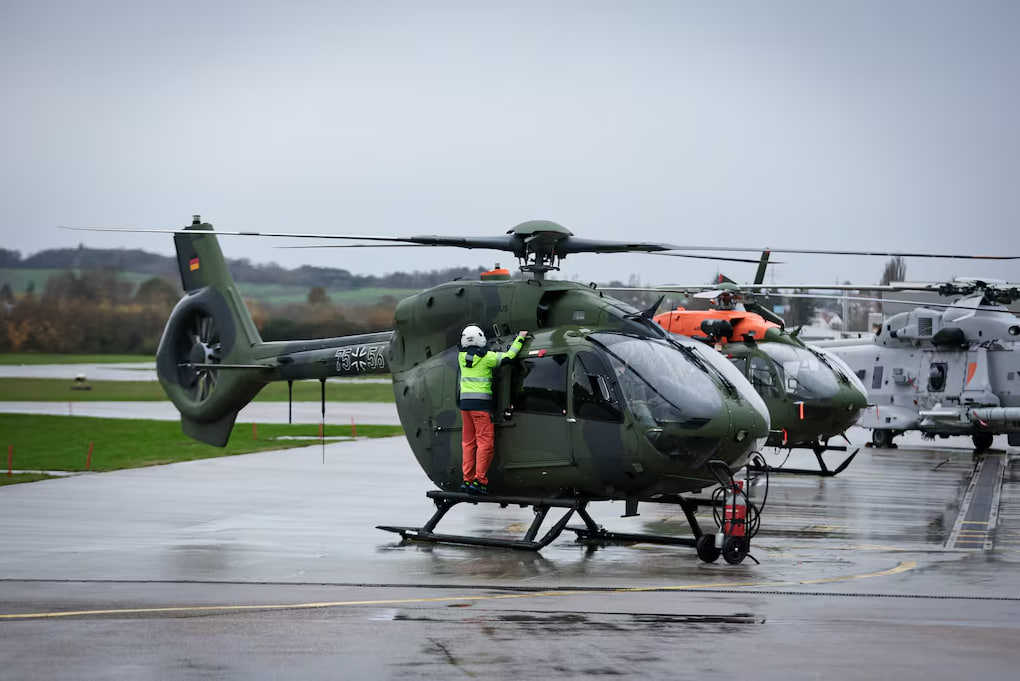PARIS — Airbus Helicopters is aiming to turn its strong civilian and public-sector presence in Poland into a foothold in the military sector, promoting the H145M as a versatile light utility and training platform.
According to Ludovic Boistot, the company’s vice president of sales for Eastern Europe and CIS, the twin-engine H145 offers a unique balance between agility and capability, making it well-suited to complement heavier aircraft like the Apache. Boistot spoke ahead of the Paris Air Show, highlighting the company’s readiness to support Poland’s defense modernization efforts.
Although Airbus has been an established partner in Poland’s civilian and para-public aviation sectors, Boistot said the company is eager to demonstrate its value on the defense side as well.
This push follows years after a major setback: a 2015 agreement to supply H225M helicopters was scrapped by Poland’s incoming government, triggering a legal dispute. Now, with the administration under Prime Minister Donald Tusk showing greater willingness to strengthen European defense ties, Airbus is re-engaging with hopes of reentering the military helicopter market.
Airbus is backing up its offer with support infrastructure and partnerships. The company recently signed a memorandum of understanding with Babcock and CAE to jointly provide H145M helicopters, training systems, and simulation for the Polish Air Force.
Airbus has already trained more than 130 engineers in Poland and envisions a model where local facilities handle maintenance and component integration, enhancing the country’s industrial autonomy in defense aviation.
Last year, Poland’s Ministry of National Defence outlined a plan to acquire 24 helicopters for pilot training, potentially replacing the aging Mi-2 fleet. While details on the timeline and technical specifications remain pending, Airbus is preparing a structured response with local collaboration in mind.
Boistot sees the H145 as a strategic fit, especially given Poland’s expanding defense needs and a recent $10 billion purchase of 96 AH-64E Apaches. He noted that choosing the H145 would align Poland with other European forces using the platform, boosting interoperability and potential for international cooperation.
While competitors offer bundled packages, Airbus opted for a shared approach, teaming with Babcock and CAE instead of managing everything internally—a move Boistot said reflects the complexity of defense programs and the value of local expertise.
Although Leonardo has production capabilities in Poland, Airbus is banking on technology transfer and workforce development to win support. Boistot argued that the H145 is more suitable for multi-role operations than rival offerings.
Beyond the helicopter itself, Airbus is also promoting the integration of unmanned systems. The company has made significant progress in pairing manned helicopters with drones, a capability that could appeal to Poland and other Eastern European nations as they replace outdated Soviet-era aircraft.
Boistot described the region as a growth market, with many countries still flying legacy platforms like the Mi-8, Mi-17, and Mi-24. He also noted that Ukraine, depending on how the conflict evolves, could become a major customer for replacement helicopters in the future.
Despite focusing on the H145M in Poland, Boistot said the larger H225 still holds strong potential elsewhere in the region, though no current sales campaign is underway in Poland. Nonetheless, he expressed readiness to present Airbus’s offerings if interest arises.


